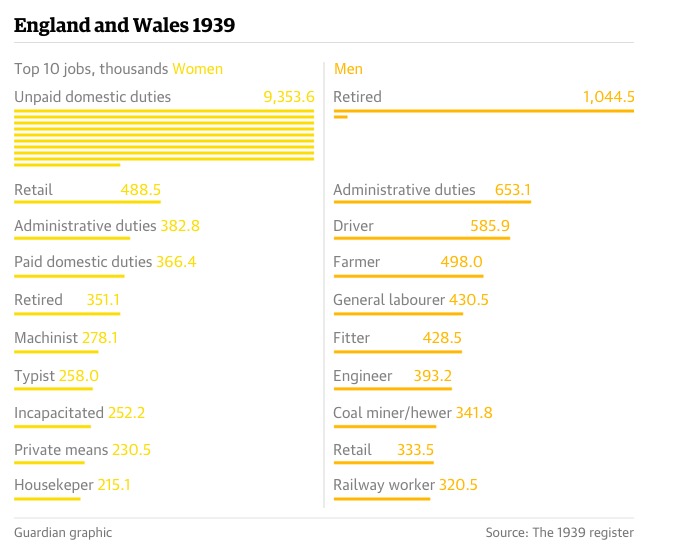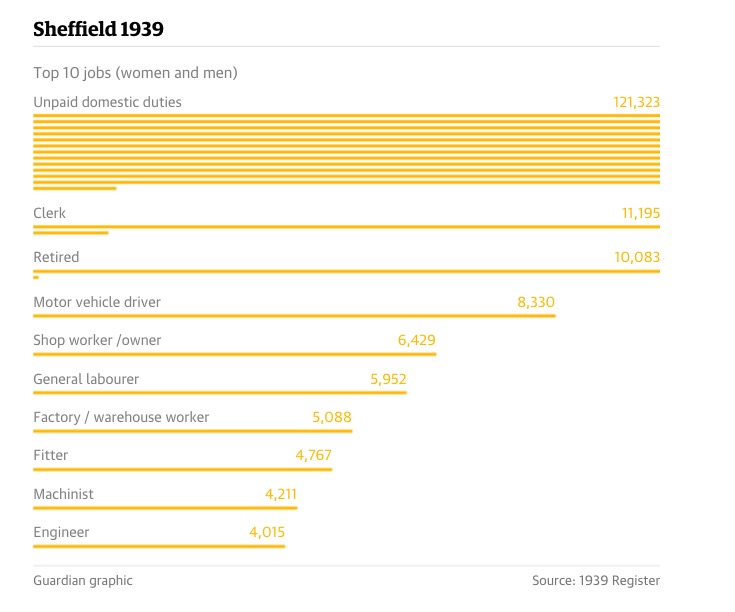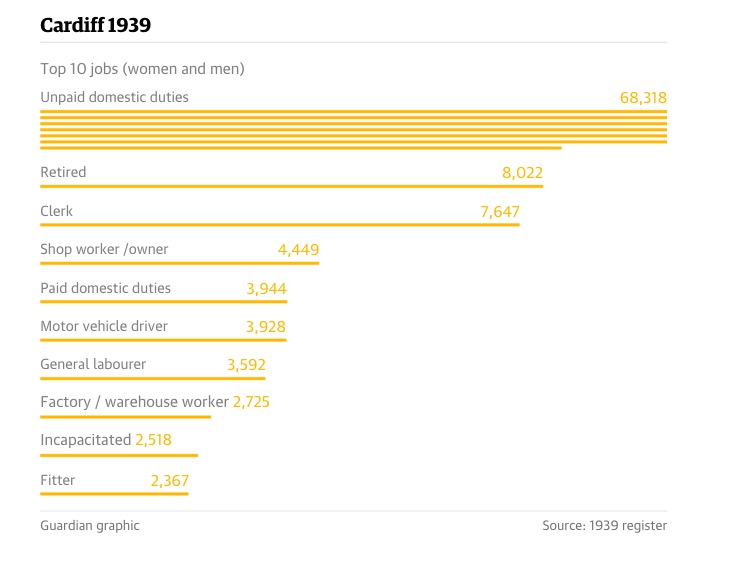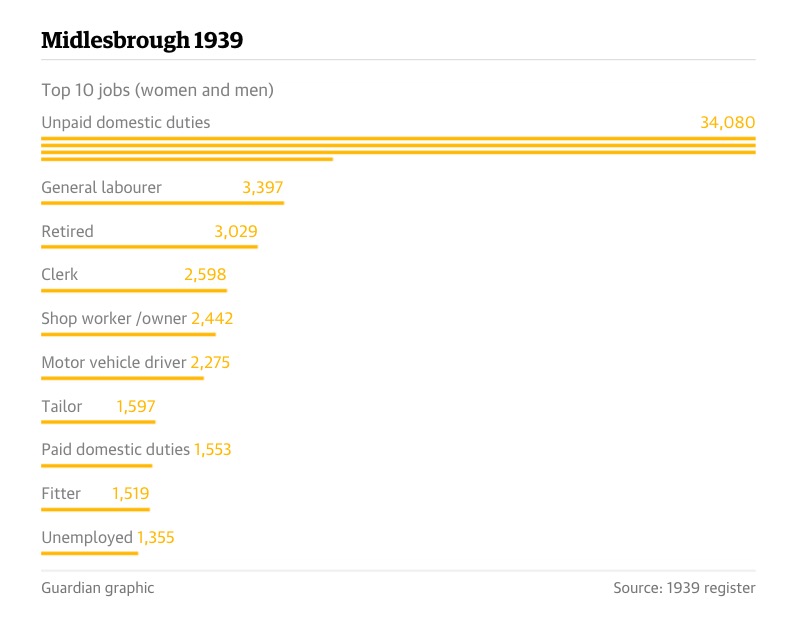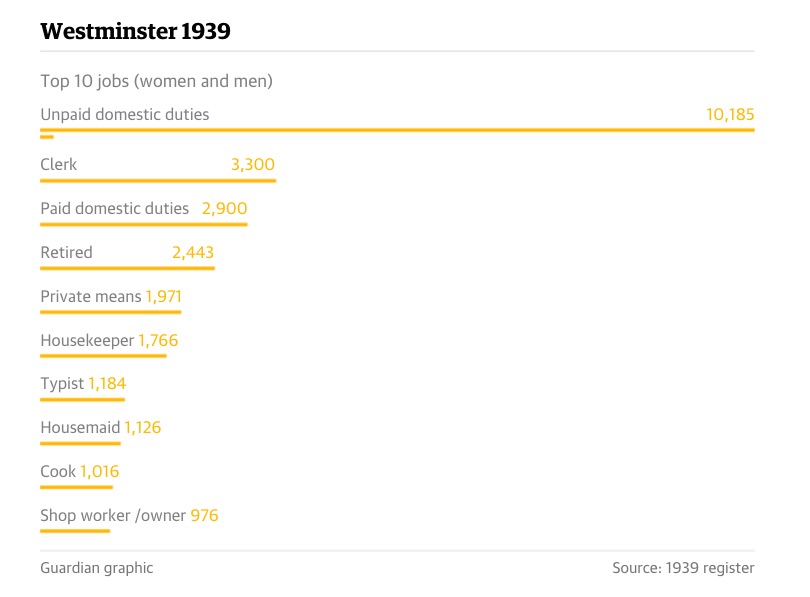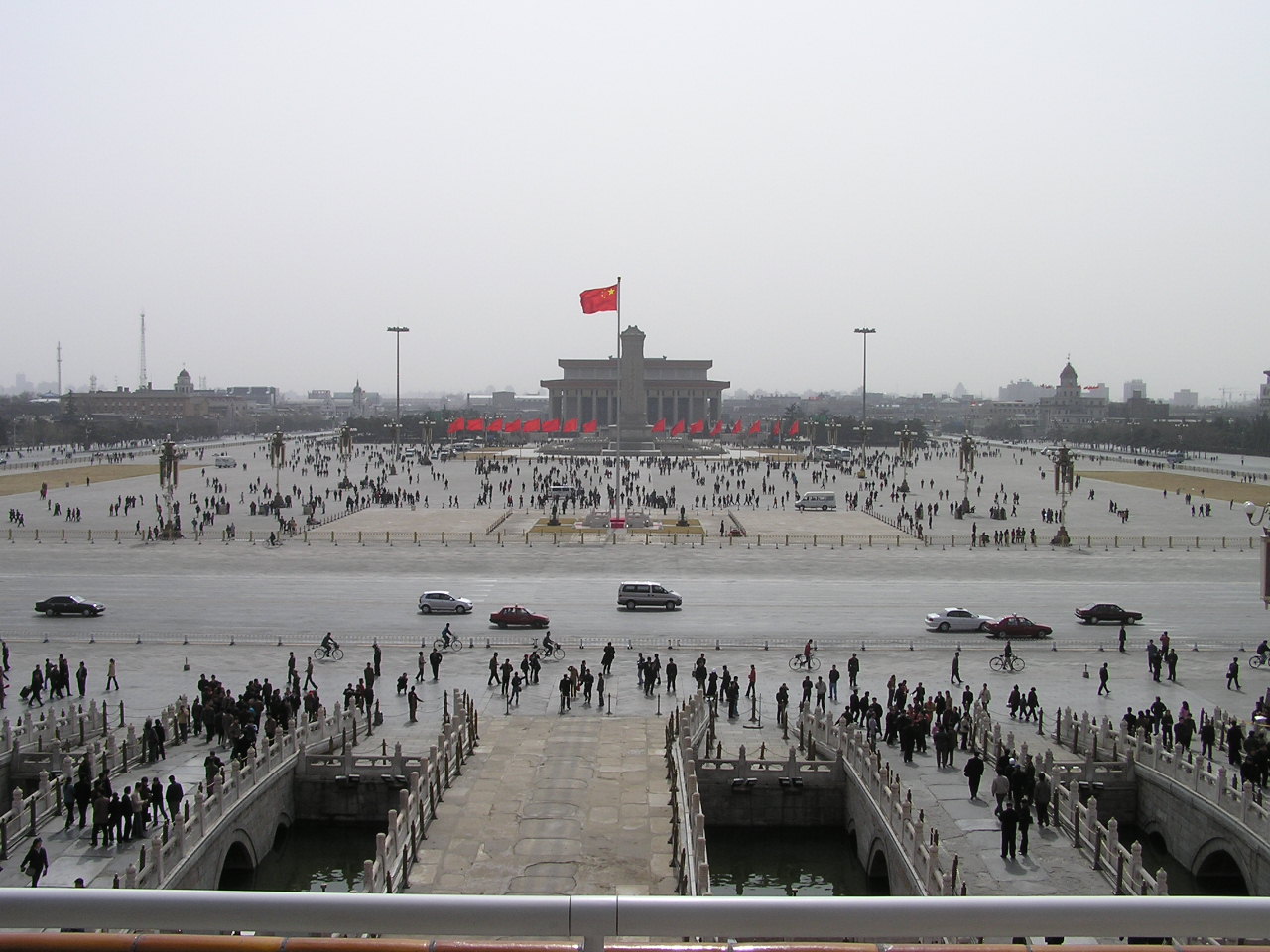The census for the year war broke out in Europe was essential for identity cards, evacuations and rationing. It is now available online.

Europe was at war, Ian Fleming was a stockbroker rather than a novelist and most of London’s children had been forced from home: this was England and Wales in 1939, a digitised portrait of which is now available online.
The population register, taken in late September 1939, just after after the outbreak of the second world war, is the only surviving record of the population of England and Wales between 1921 and 1951. The digital version was released on Monday by Findmypast in association with the National Archives.
The register, compiled by 65,000 enumerators and sent to every household in England and Wales, documents the lives of 41 million people. It gives the names of the inhabitants at each address, their date of birth, marital status and occupation.
Notable entries include James Bond creator Ian Fleming, then 31, who stated his main job as “stockbroker”, while the grandfather of Victoria Beckham was working on the London Docks and living in Tottenham.
From our partners:
The register also includes Joseph Kennedy, father of the future US president, John F Kennedy, who is listed as ambassador to the United Kingdom. In Port Talbot, the actor Anthony Hopkins is a toddler living with his parents. His father, Richard, is a baker and his mother is a housewife called Muriel.
The register was taken soon after 1.5 million children, women and disabled people were evacuated to escape the bombing of cities by German forces. It shows that just 2% of the population in London was aged 0-10, compared with the national average of 14%, while 8% was aged 10-19, against 16% nationally. The figures for London also show a gender split of 60% male to 40% female, compared with 47% to 53% nationally.
Across England and Wales there were only 111 people aged over 100 when the register was taken, compared with 12,320 centenarians recorded in 2013.
The oldest man on registration day was born in 1831 during the reign of William IV. In 1939 he was living with his nurse, while serving as a senior air raid warden.
The most popular retirement locations at the time included Tavistock, Glastonbury, Looe, Newquay, Woodstock, Brixham, Torpoint, Knighton, Hearne Bay and Dawlish.
Overall, the average age was 33 for men and 35 for women, compared with a median age of 38 for men and 40 for women in the 2011 census.
An average of three people lived in each household. The register provides unprecedented insight into those 12 million households, including the composition of the labour force in England and Wales at the time.
“Many of the most common occupations in 1939 have disappeared today.”
Here are the top 10 occupations registered for the 22 million women and the 19 million men in 1939:
Almost half of women at the time were performing domestic work, which was mostly unpaid.
Westminster topped the country’s butler chart with 247 of England and Wales’ 595 butlers registered in the borough.
In Leicester and Leeds, more women were working in the fashion industry than in any other, mostly as tailors, dress makers or hosiery knitters.
The most popular names in 1939 were Mary, Margaret, Elizabeth, Annie and Florence, while for men, the most common names were John, William, George, Charles, Frederick and Thomas.
[infobox title=’Writer and broadcaster Andrew Marr said: ‘]“The 1939 register is one of the most important documents in recent British history. A comprehensive record of the civil population on the outbreak of war, it captures a people whose lives were about to change forever. It records streets that within months, under the assault of the Luftwaffe, were to disappear; families that would be separated by the events of war: evacuation, conscription and sometimes worse. ”
[/infobox]The information recorded in the 1939 register was essential to issuing identity cards, planning mass evacuations and rationing.
The register, spanning 1.2 million pages, would also go on to play a central role in the establishment of post-war services such as the NHS.
Methodological note: the 1939 register collected information based on self-definition, allowing the majority of occupations to be recorded without supervision or standardisation. The statistics and categorisation for each occupation were provided by Findmypast. They are intended to be indicative rather than definitive.
Update: a visual in this article was amended on 2 November. A previous version had incorrect figures for occupations in 2011.
This feature originally appeared in The Guardian.








